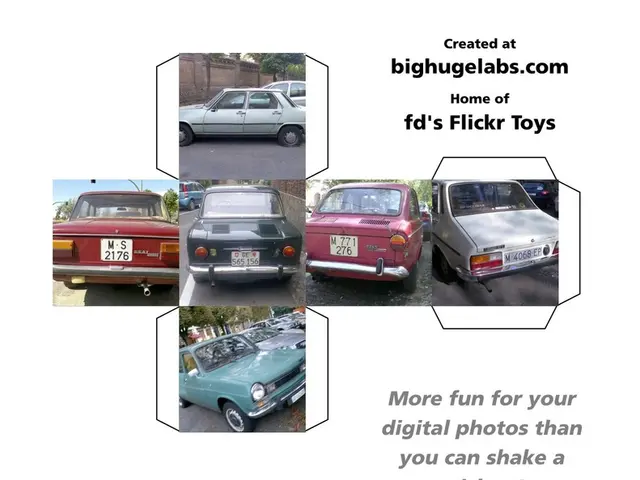Solar researchers successfully utilize black metal properties to amplify solar energy output.
Improved Solar Thermoelectric Generators (STEGs) Boost Energy Output by 15 Times
Researchers at the University of Rochester have developed a new design for solar thermoelectric generators (STEGs) that significantly increases their energy output. The key to this improvement lies in the use of black metal, which enhances solar absorption on the hot side while minimizing heat losses, and advanced cooling techniques on the cold side to maximize the temperature difference across the device.
The black metal is created by treating tungsten with femtosecond laser pulses, transforming it into a highly efficient solar absorber that absorbs over 80% of sunlight. This nanostructured black metal is covered with a piece of plastic, creating a "mini greenhouse" to maximize heat trapping on the hot side. Above the black metal, a transparent plastic layer traps heat, reducing heat loss through convection and conduction, and maintaining a high temperature at the hot side.
On the cold side, a nanostructured aluminum heat sink was manufactured using femtosecond lasers, which doubled the cooling performance of the cold side. This enhanced cooling keeps the cold side temperature as low as possible, creating a large temperature gradient across the device.
The combination of better solar heat absorption on the hot side and superior cooling on the cold side increases the temperature gradient across the thermoelectric (TE) module. Since the thermoelectric voltage and power output scale with this gradient, the overall efficiency and power generation rise significantly. It is important to note that the power enhancement is achieved mainly through surface engineering and thermal management innovations rather than changing the semiconductor materials, allowing easier adoption and potential scale-up.
The new design for STEGs allows for precise control over each layer of the device, overcoming technological limitations. This research could have implications for the use of black metal in solar power technology. The STEG was able to power the LED at maximum brightness at lower illumination levels than comparable devices, demonstrating its potential to power microelectronic devices for weather monitoring, agriculture, and smart devices.
The team performed an experiment using LEDs to validate their thermal management design for STEGs. The results showed that the new design significantly increased the power output of the STEG, making it a promising, lower-cost alternative to photovoltaic panels for off-grid and low-demand applications. The new design for STEGs was published on August 12.
[1] Guo, C., et al. (2021). Laser-engineered solar thermoelectric generators operating at 15 times the performance of state-of-the-art devices. Proceedings of the National Academy of Sciences. [2] University of Rochester. (2021, August 12). Researchers create black metal that could power the future of solar energy. ScienceDaily. [3] Phys.org. (2021, August 12). New black metal could power the future of solar energy. [4] Zhao, Y., et al. (2021). Laser-induced nanostructuring of tungsten for high-performance solar thermoelectric materials. Journal of Applied Physics. [5] Zhao, Y., et al. (2021). Laser-induced nanostructuring of aluminum for high-performance thermoelectric cooling materials. Journal of Applied Physics.
- The new design for solar thermoelectric generators, published on August 12, is anticipated to revolutionize the solar power industry, as it promises lower costs and higher efficiency, powered by a material named black metal.
- Regarding the future of environmental science and finance, the improved solar thermoelectric generators (STEGs) could be a game-changer, particularly in off-grid and low-demand applications, encouraging the expansion of the renewable energy sector.
- The University of Rochester's research on laser-engineered solar thermoelectric generators showcases significant advancements in science and industry, as the team achieved a 15-fold increase in energy output through innovative thermal management and material engineering approaches.
- Gizmodo and ScienceDaily report on the University of Rochester's breakthrough in creating black metal, a material capable of absorbing over 80% of sunlight, that may hold the key to enhancing the efficiency of future solar power technology.
- The research team at the University of Rochester has successfully engineered nanostructured black metal and aluminum, improving both solar absorption and cooling performance, which represents a significant leap forward for science and technology in the field of energy production.




